Search the Special Collections and Archives Portal
Search Results
Southern Nevada Jewish Heritage Project
"The goal of this 2014-2015 project is to build a web and mobile resource that will connect researchers from around the world to thousands of historical items—photographs, brochures, scrapbooks, letters, drawings, videos, and more—detailing the lives and contributions of Jews in Southern Nevada. It will include carefully researched biographies, timelines, and histories of institutions, events, and prominent themes showing the integral roles Jews have played in the history of Southern Nevada.
Corporate Body

Transcript of interview with Gil Cohen by Claytee White, August 5, 2014
Date
Archival Collection
Description
Interview with Gil Cohen by Claytee White on August 5, 2015. In this interview, Cohen discusses growing up in Las Vegas and attending University of Nevada at Reno. He returned to Las Vegas to join the management training program at the Stardust. He talks about his friendships with Moe Dalitz and Carl Cohen, and his interest in golfing. He also discusses corporate ownership of casinos, unions, and his experiences working at different Strip hotels.
Gil Cohen came to Las Vegas in 1957, when was ten years old, when his father, Yale Cohen, was recruited by Moe Dalitz to work at the Stardust Hotel and Casino. Cohen graduated from University of Nevada Reno, and started working at the Stardust through the management-training program. In 1975, he was made hotel manager, his first of many leadership positions in Strip properties, which have included the Dunes, Aladdin, Hacienda and Monte Carlo, where he currently works as a casino host.
Text

Transcript of interview with Charles Nur Fernald by Claytee D. White, May 31, 2014
Date
Archival Collection
Description
Text

Transcript of interview with Donald L. Shalmy by Stefani Evans and Claytee D. White, March 10, 2017
Date
Archival Collection
Description
Text
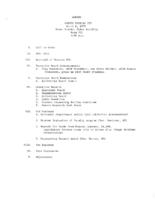
Meeting minutes for Consolidated Student Senate, University of Nevada, Las Vegas, March 06, 1979
Date
Archival Collection
Description
Text
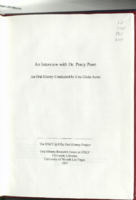
Transcript of interview with Dr. Percy Poon by Lisa Gioia-Acres, February 5, 2007
Date
Archival Collection
Description
Text
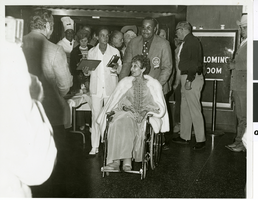
Photograph of Judy Bayley at a public event at the Hacienda Hotel and Casino, Las Vegas, Nevada, 1971
Date
Archival Collection
Description
Image
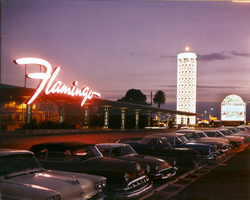
Photograph of the Flamingo Hotel at sunset, Las Vegas, circa mid 1950s
Date
Archival Collection
Description
Image
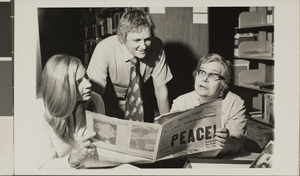
Photograph of individuals at Special Collections, University of Nevada, Las Vegas, September 1975
Date
Archival Collection
Description
From left to right: Susan Jarvis, Hal Erickson, and Alfreda Blood in the Special Collections department at the University of Nevada, Las Vegas (UNLV). They are examining the Leonard T. Blood papers just donated to UNLV Special Collections.
Image
Index card envelopes cataloging films released between 1937 and 1977; includes titles, release details, credits, and newspaper and magazine clippings highlighting each film's premiere, approximately 1950 to 1977
Level of Description
Archival Collection
Collection Name: Howard Hughes Film Production Records
Box/Folder: Box 431 (Restrictions apply), Box 432 (Restrictions apply), Box 433 (Restrictions apply), Box 434 (Restrictions apply), Box 435 (Restrictions apply), Box 436 (Restrictions apply), Box 437 (Restrictions apply), Box 438 (Restrictions apply), Box 439 (Restrictions apply), Box 440 (Restrictions apply), Box 441 (Restrictions apply), Box 442 (Restrictions apply), Box 443 (Restrictions apply), Box 444 (Restrictions apply), Box 445 (Restrictions apply), Box 446 (Restrictions apply), Box 447 (Restrictions apply), Box 448 (Restrictions apply), Box 449 (Restrictions apply), Box 450 (Restrictions apply), Box 451 (Restrictions apply), Box 452 (Restrictions apply), Box 453 (Restrictions apply), Box 454 (Restrictions apply), Box 455 (Restrictions apply), Box 456 (Restrictions apply), Box 457 (Restrictions apply), Box 458 (Restrictions apply), Box 459 (Restrictions apply), Box 460 (Restrictions apply), Box 461 (Restrictions apply), Box 462 (Restrictions apply), Box 463 (Restrictions apply), Box 464 (Restrictions apply), Box 465 (Restrictions apply), Box 466 (Restrictions apply), Box 467 (Restrictions apply), Box 468 (Restrictions apply), Box 469 (Restrictions apply), Box 470 (Restrictions apply), Box 471 (Restrictions apply), Box 472 (Restrictions apply), Box 473 (Restrictions apply), Box 474 (Restrictions apply), Box 475 (Restrictions apply), Box 476 (Restrictions apply)
Archival Component
